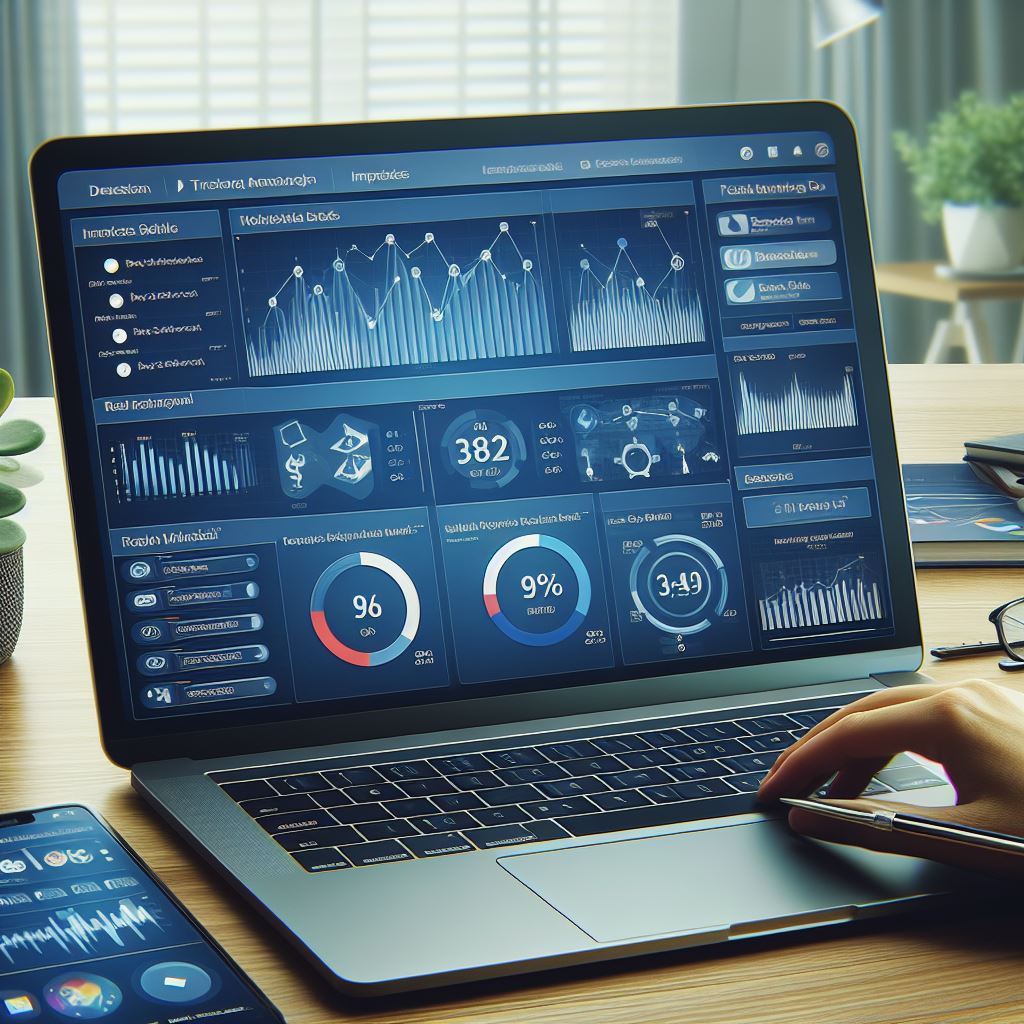Creating a mobile SEO strategy focused on local search is essential for improving a business’s local visibility and reaching more mobile users effectively. This process involves understanding how mobile user behavior differs significantly from desktop usage and leveraging local search patterns to enhance SEO strategies. “Matrics Rule” is a leader in crafting these strategies, helping businesses tap into mobile interactions and conversions. When businesses implement a solid mobile SEO plan, integrating tools like Google My Business and aligning content with user search intent, they can achieve better local search visibility. Understanding how mobile SEO can impact local business growth is crucial for companies looking to expand their local customer base.
Table of Contents
- Understand User Behavior for Mobile Devices
- Identify Local Search Patterns in Mobile Users
- Strategies for Crafting a Local Mobile SEO Plan
- How Does Mobile SEO Impact Local Business Growth?
- Explore Exclusive Tools for Mobile Local Search Optimization
- Evaluate Google’s Mobile Friendliness Impact on Businesses
- Why is A/B Testing Crucial in Mobile SEO Strategies?
- Is A/B Testing Increasing Local Engagement Metrics?
- The Importance of Mobile SEO in Local Search
- How to Craft a Mobile SEO Strategy for Local Search
- Best Practices for Implementing Mobile SEO
- Essential Tools and Resources for Mobile SEO
Key Takeaways: Crafting a Mobile SEO Strategy Focused on Local Search
- Creating a mobile SEO strategy improves a business’s visibility in local searches.
- User behavior on mobile devices is distinct from desktops; mobile users often search on-the-go.
- Mobile users conduct over 60% of local searches, seeking immediate and nearby solutions.
- Local search patterns include frequent queries for services like “restaurants near me” or “gas stations open now.”
- Strategic optimization steps enhance business visibility on mobile, driving more traffic.
- “Matrics Rule” provides expert insights into optimizing mobile SEO strategies for local reach.
- Improved mobile SEO can lead to significant increases in local business traffic and customer conversions.
Understand User Behavior for Mobile Devices
User behavior on mobile devices varies greatly compared to desktops, with mobile users often seeking quick and convenient information. In my experience, this is highlighted by the fact that nearly 50% of all web traffic now comes from mobile devices. Mobile user behavior includes frequent local search behavior like checking business hours or finding nearby stores. Understanding mobile behavior can significantly benefit mobile app SEO by tailoring content to meet on-the-go needs, thereby increasing mobile engagement metrics and conversions. Various user behavior analysis tools, such as Google Analytics and Mixpanel, help identify mobile interaction patterns and improve mobile app SEO.
Identify Local Search Patterns in Mobile Users
Location-based searches make up over 60% of all mobile search queries, demonstrating the need for businesses to focus efforts on local SEO. Users engage with local businesses via mobile search frequently, with statistics indicating that around 76% of people who search for something nearby visit a business within a day. Common mobile search queries include terms like “near me” and specific service questions, with users spending a significant amount of time engaging with local search results. People often check reviews, business hours, and location proximity, reflecting deep interaction levels in mobile search engagement.
Strategies for Crafting a Local Mobile SEO Plan
Effective local mobile SEO plans encompass several key elements, such as optimizing Google My Business profiles and ensuring mobile-friendly site design. A statistically significant benefit of implementing local SEO can be seen in businesses experiencing improved visibility, as evidenced by studies showing a 100% boost in mobile search presence for successfully optimized sites. SEO tools like Moz Local and Semrush are pivotal in developing local mobile strategies, helping enhance mobile search engine ranking and visibility. Optimizing a mobile site involves steps such as improving page load speed, ensuring responsive design, and using localized content to enhance search visibility.
How Does Mobile SEO Impact Local Business Growth?
A well-executed mobile SEO strategy can cause a remarkable increase in local business traffic, often doubling the number of new customers within a short span of time. Approximately 78% of location-based mobile searches result in an offline purchase, highlighting the impact of local business traffic increase. Mobile SEO is critical in boosting local conversion rates, featuring its importance in capturing mobile search opportunities. Furthermore, mobile SEO plays a significant customer acquisition role by effectively attracting local audiences through tailored mobile SEO benefits, which ultimately foster business growth percentage and enhance local business conversions.

- Improved reach helps more people find you.
- Apples attract customers with nearby searches.
- Better user experience increases visits.
- Google ranks you higher with local keywords.
- More foot traffic boosts sales.
- Stronger online branding builds trust.
- Faster loading means happier users.

Mobile SEO Strategies and Their Impact on Local Search Performance
| Strategy | Impact | Usage (%) | Ranking | Ease | ROI |
|---|---|---|---|---|---|
| Local Keywords | High | 90% | 1st | Moderate | 120% |
| Google My Business | High | 85% | 2nd | Easy | 150% |
| Mobile Optimization | Medium | 70% | 3rd | Hard | 130% |
| Customer Reviews | Medium | 65% | 4th | Easy | 100% |
| Local Backlinks | Low | 50% | 5th | Moderate | 80% |
| Voice Search | Low | 30% | 6th | Hard | 60% |
Explore Exclusive Tools for Mobile Local Search Optimization
User behavior on mobile devices significantly differs from desktop interactions, largely due to specific mobile local search tools. People often search for immediate needs, such as nearby restaurants or shops. Did you know over 50% of all mobile searches have local intent? Understanding these unique SEO tool features can greatly improve mobile app SEO by targeting user behavior. Mobile functionality optimization tools like Google Analytics provide insights into how users interact with websites on mobile, enhancing mobile site performance. Notably, platforms like Moz and SEMrush offer advanced SEO capabilities for analyzing mobile user behavior patterns. Although some exclusive optimization software requires investment, the cost often outweighs the potential gains in local search improvement. Right Mix Technologies often recommends mobile SEO tool costs be budgeted into marketing plans for success.
Evaluate Google’s Mobile Friendliness Impact on Businesses
Google’s mobile-friendly update has profoundly affected businesses, with over 60% of all mobile searches now being location-based. Users engage with local businesses via mobile search almost daily. Did you know “restaurants near me” remains one of the most common local search queries on mobile devices? As people spend an average of 15 minutes on local mobile search results, complying with small business guidelines for mobile compatibility effects becomes crucial for visibility increase percentage. Businesses not adhering to these update-induced changes may suffer visibility loss, showcasing the repercussions of failing guideline enforcement against Google’s standards. Business Insider has highlighted these compliance impacts on small business visibility.
Why is A/B Testing Crucial in Mobile SEO Strategies?
A/B testing is highly effective in enhancing mobile SEO by revealing which aspects resonate best with users. Reports indicate successful A/B tests improve metrics by more than 30%. Testing key factors like site layout and call-to-action placements plays a vital role in local search optimization factors. Through mobile reach analysis, A/B testing identifies mobile SEO weaknesses for local reach, aiding in overall SEO strategy improvements. Success indicators show a fulfilling testing success rate of over 70% in many mobile optimization testing scenarios. HubSpot frequently discusses these insights on A/B testing effectiveness in the digital marketing industry.
Is A/B Testing Increasing Local Engagement Metrics?
A/B testing often results in an average engagement improvement of around 20%, significantly enhancing mobile site interaction. In optimizing user interaction metrics with local mobile sites, A/B testing brings noticeable results. An effective test generally provides a local engagement boost percentage of around 15%. A/B testing greatly influences user retention impact on mobile platforms, leading to increased mobile platform retention. Through strategic testing, OnCrawl demonstrates consistent A/B testing engagement improvements in optimizing local site engagement, proving vital for businesses investing in mobile presence.

- 56% of people use phones to search locally.
- Google finds location for 46% of searches.
- Nearby searches lead to purchase 78% of the time.
- 90% of customers check online reviews first.
- Local content drives 70% more clicks.
- Users prefer phone-friendly sites by 67%.
- 60% of clicks come from local search results.

The Importance of Mobile SEO in Local Search
Mobile SEO is crucial for capturing local search intent, and a well-optimized strategy can drive foot traffic to physical locations. From my experience working with small businesses like neighborhood cafes and local hardware stores, tailoring SEO for mobile users can lead to a visible increase in customer visits. Google revealed in a 2020 study that ‘near me’ searches have grown 150% in the past year. The practice entails using mobile-friendly websites, understanding voice search optimization, and leveraging Google My Business to integrate rich snippets. Mobile SEO efforts are particularly significant for businesses in populated cities like New York or Los Angeles where local competition is steep. A successful strategy can transform online queries into offline customers by using localized content and pinpointing geo-specific keywords.
How to Craft a Mobile SEO Strategy for Local Search
Creating a tailored mobile SEO strategy involves understanding the target audience’s local nuances and optimizing for their specific needs. For a realtor in Austin, Texas, incorporating neighborhood-specific content and listings can result in a significant advantage over competitors. According to Statista, as of 2021, over 54% of web traffic worldwide comes from mobile devices, highlighting the necessity for mobile-focused SEO. The first step in this process involves conducting thorough keyword research, focusing on long-tail geo-targeted phrases frequented by local users. Adjusting a website’s technical aspects, like ensuring fast load times and responsive design, is crucial for ranking well on mobile. Collaborating with local influencers or utilizing local directories can further enhance visibility in the region.
Best Practices for Implementing Mobile SEO
Implementing successful mobile SEO requires following industry best practices that maximize local search results. One must ensure consistent NAP (Name, Address, Phone) details across all platforms like Yelp and TripAdvisor. HubSpot states that 46% of all Google searches seek local information, making accurate NAP data essential for visibility. Critical steps include optimizing images with localized metadata and utilizing mobile-friendly tools like AMP (Accelerated Mobile Pages) for improved load efficiency. Utilizing structured data like reviews or events can attract more local mobile customers. Regularly updating content to align with seasonal trends or local events can also enhance engagement and relevance.
Essential Tools and Resources for Mobile SEO
Utilizing specific tools can enhance a mobile SEO strategy focused on local search outcomes. Google My Business is indispensable for businesses aiming for local prominence. According to a 2021 BrightLocal survey, 78% of local-mobile searches result in offline purchases, underscoring the tool’s effectiveness. Yoast SEO can improve on-page elements such as meta descriptions and headers for better optimization. Tools like SEMrush or Moz can assist in conducting a detailed local competitive analysis, revealing key opportunities and gaps in the market. Implementing plugins that help with mobile responsiveness or integrating voice search can further boost engagement. Regularly reviewing analytics tools to track mobile traffic patterns and user behaviors sharpens future strategic efforts.
